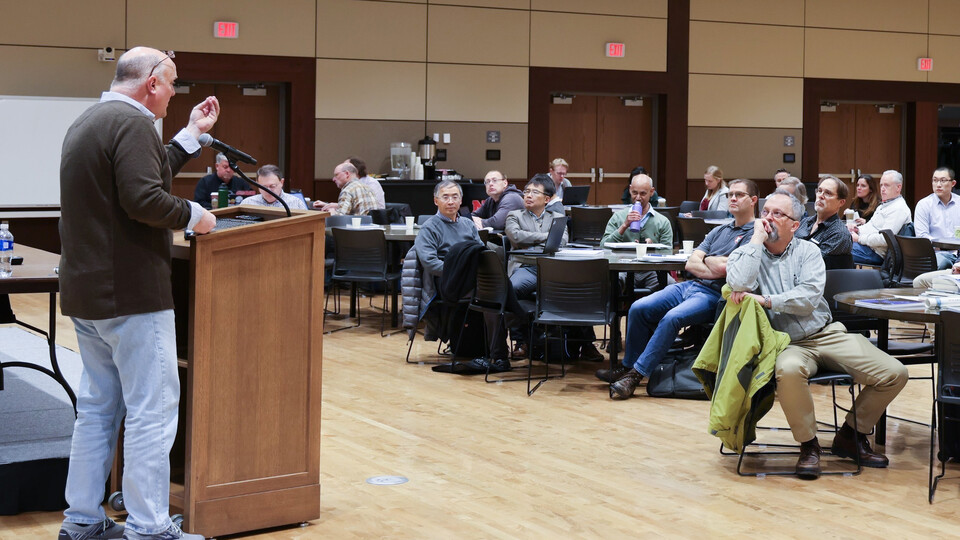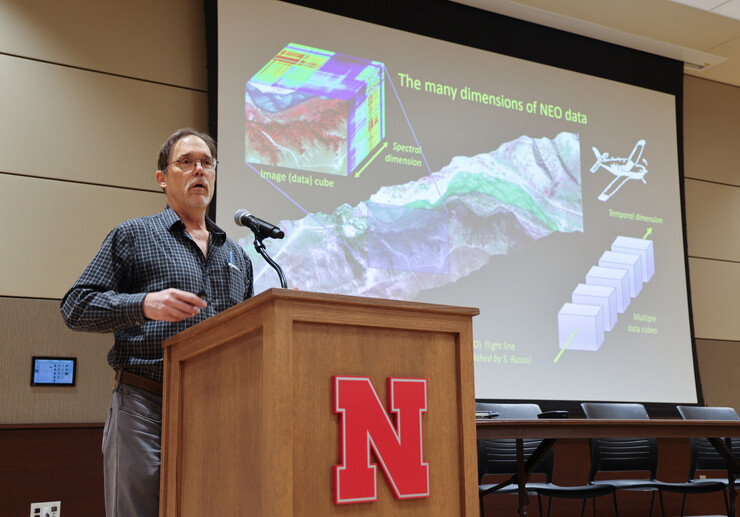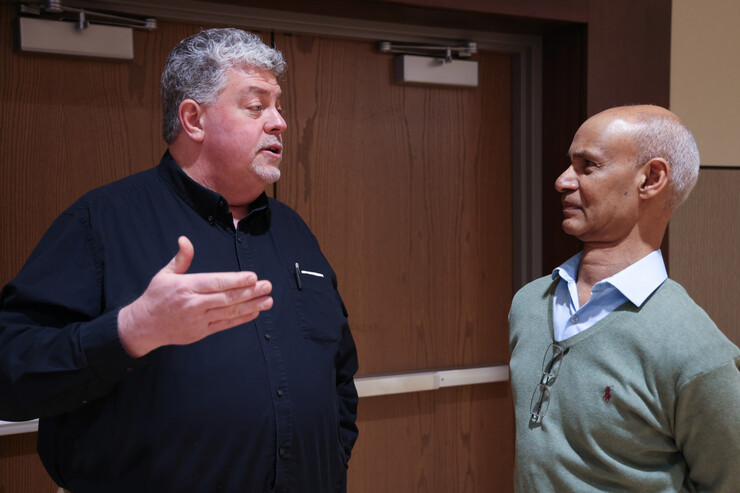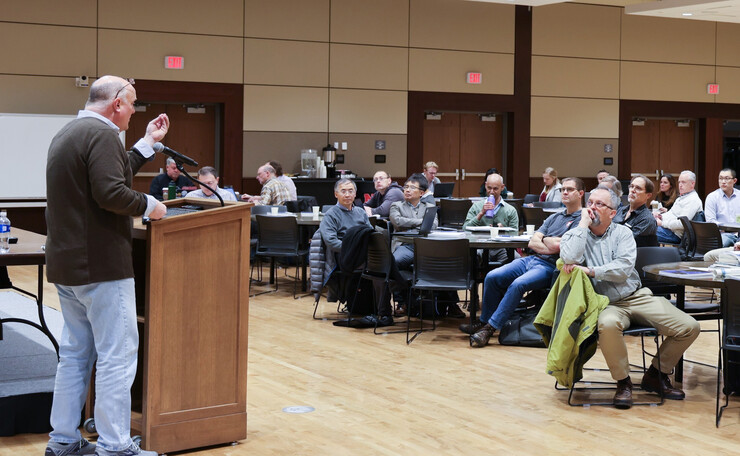· 5 min read
Husker faculty, NASA pursue partnerships on Midwest climate resilience

A Husker conference co-sponsored with NASA has kickstarted the effort to create multi-institution partnerships to help the Midwest address climate-related concerns such as drought, extreme wind events and floods.
Scientists from multiple states and NASA met at the University of Nebraska–Lincoln for the Harnessing the Heartland conference Feb. 26-28 to hear from a range of Midwest stakeholders about their climate-related concerns. Attendees then brainstormed ways that universities, NASA and the private sector can work together to promote climate sustainability in the region.
Conferees followed up with sessions at the University of Nebraska Medical Center to develop ideas to address climate-related environmental health needs.
The initiative aims to “bring together the best and brightest from across all sectors to help gather around the topic of climate resilience research, to produce actionable information and inform decision-making at all levels,” said Robert Swap, associate division director for mission planning for NASA’s Earth Science Division. “Improving people’s livelihoods and the understanding of the weather” is another key focus.
“It’s incredibly important to work across the region on areas that are of critical importance,” said Jeanette Thurston, executive director of the North Central Regional Association of State Agricultural Experimental Station Directors. “By working across institutions, this effort can leverage their different expertise and resources to produce products and solutions to the problems we’re facing in the heartland due to climate change.”
The initiative isn’t a top-down approach, Swap said, but instead develops its strategies from input from Midwest residents, communities and institutions.
Eric Hunt, a Nebraska Extension educator focusing on agricultural meteorology and climate resilience, was co-originator of the conference with Swap. Presentations and networking at the conference created encouraging possibilities for innovative partnerships, Hunt said, as conferees learned about each other’s climate research and data collection projects.
Larkin Powell, head of the University of Nebraska–Lincoln’s School of Natural Resources, also pointed to the collaborative opportunities.
“There is an increasingly keen need to make better decisions to manage soil, water and biodiversity resources in our working landscapes in the face of climate shifts and extreme weather events,” he said. “The potential to collaboratively harness the diversity of amazing platforms for data collection from ground-based, drone-based, aircraft-based and satellite-based systems is driving the conversations for this project.”
The School of Natural Resources was one of the institutional sponsors for the conference, along with the University of Nebraska Medical Center, Daugherty Water for Food Global Institute and NASA.
Craig Allen, director of the university’s Center for Resilience in Agricultural Working Landscapes, spoke on a conference panel that discussed collaborative possibilities to integrate data collection and bolster climate modeling.
The Nebraska Mesonet network of weather-data stations has promising opportunities to partner with NASA on data validation and climate modeling, said Ruben Behnke, a Husker climatologist and manager of the Mesonet.
“When NASA satellites are measuring temperature or how much water vapor is in the air, or wind speed, we can validate that data with our stations,” he said.
The initiative should include attention to climate-related concerns for vulnerable communities, said Husker climatologist Michael Hayes.
“That’s where I’m really interested in making those connections and trying to get access to some of these communities and how they might use all this data,” he said.
Hayes is among the Husker faculty participating in a federally funded Midwest collaboration to promote climate resilience through outreach to native tribes and women owning farmland.
The university shows foresight in supporting climate science resilience listening sessions and stakeholder engagement, Swap said. The university’s Office of Research and Economic Development is providing an $80,000 planning grant, for example, that a multi-disciplinary faculty group will use to develop the Great Plains Community Climate Resilience Institute.
Although NASA is best known for its space missions, the agency’s Earth Science Division pursues a wide range of major projects, said Hunt, who has partnered with NASA on projects during his climatology career. Nebraska “has a very strong history of working with earth scientists at NASA,” he said.
Recent NASA connections include a 2022 tour that NASA Earth Science representatives made of Nebraska farms and the Eastern Nebraska Research Extension and Education Center, and presentations Husker faculty made in collaboration with NASA in 2023 at the national Commodity Classic event, explaining the importance of innovative technology and data-driven practices for modern agriculture.
“Our teaching, research and community engagement teams and platforms have put the University of Nebraska in position to be a significant part of this conversation on climate resilience,” Powell said. The Harnessing the Heartland initiative “gives us the opportunity to collaborate with others and our federal partners. That has pushed our faculty, staff and students to imagine what can be done in the very near future.”










